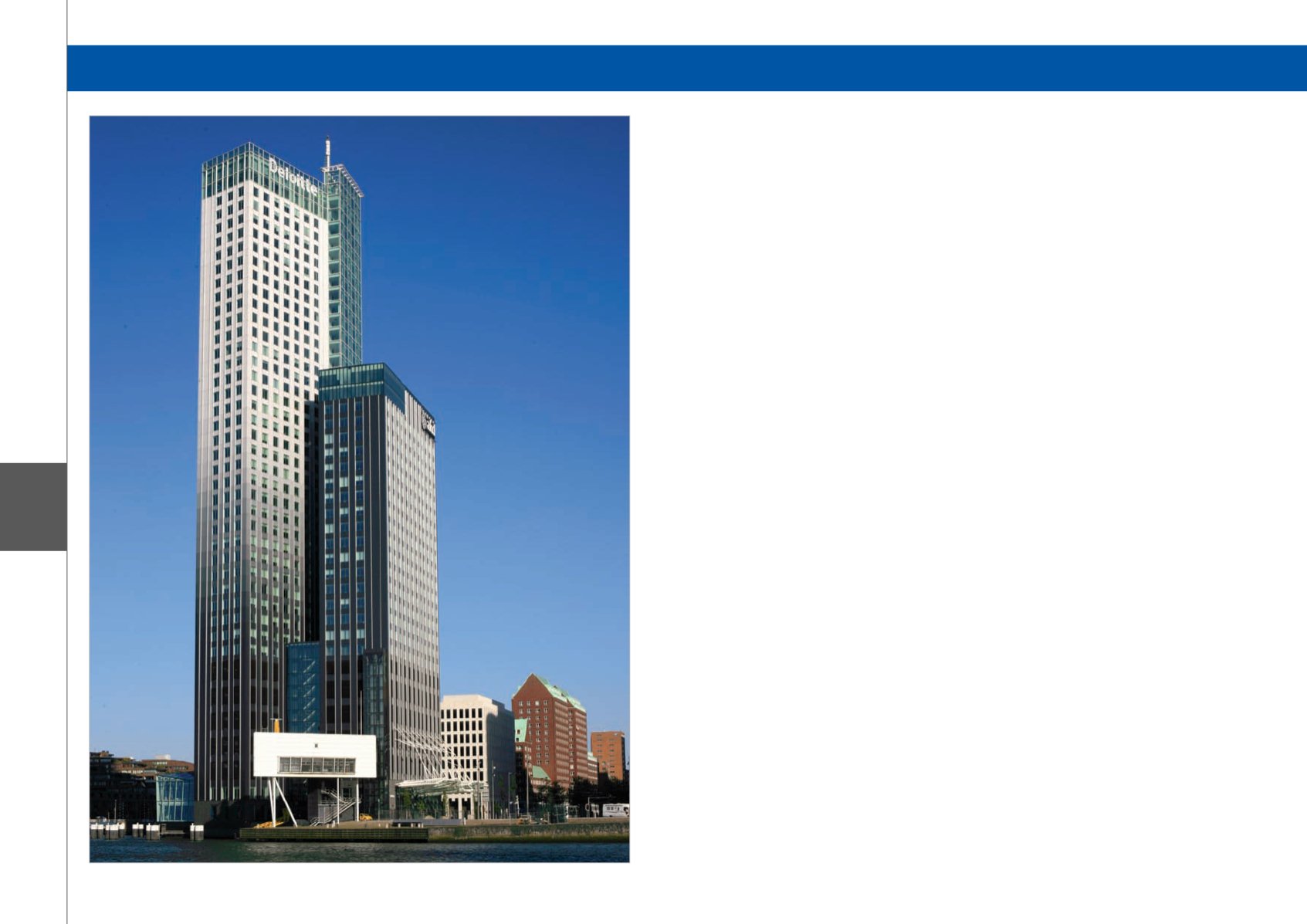
102
X1
Category 1: Buildings
With the height of 165 m, the Maastower in Rotterdam,
the Netherlands, is currently the tallest building in
Benelux. The roof level is at +157.65 m.
The Maastower is situated IN the Maas river. A part of
the river has been specially dammed up to make room
for the tower.
The Maastower has two underground parking layers.
On the ground floor and first floor levels there are the
main entrance, the entrances to the parking garages,
the distribution area, a grand café, meeting facilities
and a restaurant. An access ramp runs through the
restaurant and the main entrance hall to provide access
to the 10-level parking garage for public use above first
floor level.
The office area starts from level 12, and level 12 itself
has an archive area and fitness area. The entire floor
area of the Maastower is approximately 65,000 m².
Stability is provided by a facade tube, which is formed
by the bearing prefab facade elements. This facade
tube collaborates with the in situ core, which houses
4 elevators for low-rise (up to the 30th floor) and 3
elevators for high-rise (30th up to 44th floor).
The high foundation pressure compresses the
compressible soil layers between NAP -35 m and NAP
50 m, which causes a dish-like settlement of approx.
140 mm underneath the building. The interaction
between the structure of the building and deformation
of the subsoil has been analysed and predicted
meticulously.
It is important to investigate the dynamic behaviour
for high-rise projects. The Maastower easily meets
the demands as set in NEN6720. It is not sufficient,
however, to just meet NEN6720. Zonneveld ingenieurs
also analysed the twist vibrations and superposed these
on the translation vibrations.
Subsequently, the predictions for the vibration comfort
were calculated with the Eurocode and ISO4352.
Both methods of calculating showed that the dynamic
behaviour is well within the set limits.
The predicted accelerations do not exceed 0.15 m/s2,
which is sufficient for an office building.
Wind played an important role in the design of the
canopy above the main entrance at the front of the
building. An Scia Engineer model of the canopy was
made in close cooperation with the architect. The final
design of the canopy in steel and glass was also largely
based on this Scia Engineer model.
The facade elements have been assembled in half-brick
bond. This caused less complex connections and offers
great advantages in the structural binding.
An alternative load path for a potential calamity could
therefore fairly easily be shown.
The facade also transfers a large part of the vertical
load. Combined with wind load and settlement of the
subsoil, this leads to large internal pressure in the
lowest building layers.
The thickness of the walls has been based on this
internal pressure.
Use of Scia Engineer
The entire main bearing structure has been designed
with the finite element program Scia Engineer.
The concrete walls and floors have been entered as 2D
elements. The concrete beams and the steel structure
have been designed with 1D bar elements. The
foundation piles have been entered as springs.
With the calculation model, the entire force distribution
of the main bearing structure has been analysed and
the forces have been determined for the following
engineering process. The reinforcement of the
prefabricated elements was checked with the results of
the Scia Engineer model.
The 3D model was also the basis of the calculations
for the construction phase of the project. The 3D
Scia Engineer model also analysed and calculated the
influence of the settlement in the deeper soil layers
(“laag van Kedichem”) on the forces in the main bearing
structure.
For the canopy in steel and glass, a separate
Scia Engineer model was made to analyse the influence
of wind and accordingly adjust the final design/shape of
the canopy.
Software: Scia Engineer
Maastower - Rotterdam, The Netherlands


